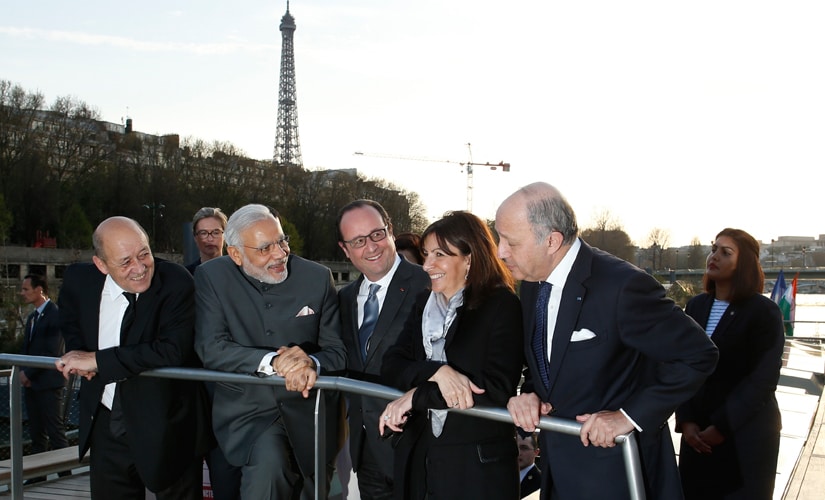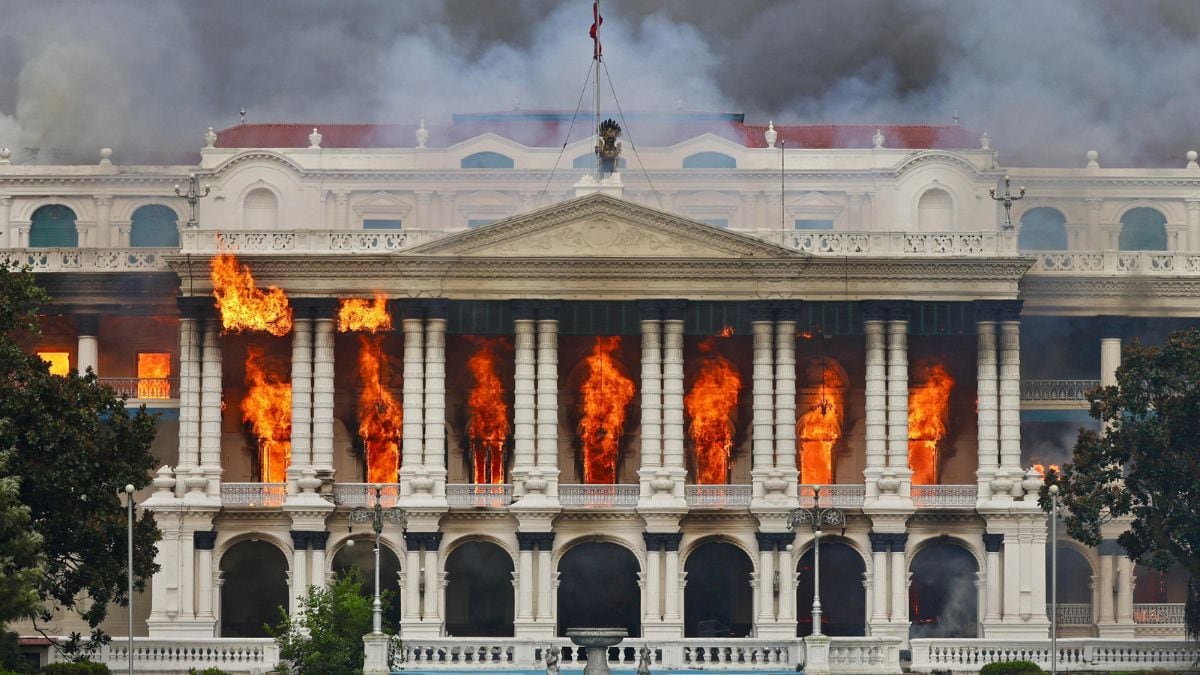Prime Minister Narendra Modi on Sunday tackled the topic of climate change in his monthly ‘Mann Ki Baat’ address, bringing the important topic into focus before setting off for the UN Climate Summit in Paris. Modi attributed the floods in Tamil Nadu to climate change. “We are seeing the impact of climate change now. The ‘unseasonal rains’ resulted in floods in Tamil Nadu. In India, we have witnessed heavy rains in non-monsoon weather. Huge losses have been reported and many people have lost their lives,” Modi said in his ‘Mann Ki Baat’. The climate conference however comes at a sensitive time. Scientists report that the evidence for climate change is now greater than ever. Average temperatures reached a record high in 2014, and the UN confirmed on Wednesday that 2015 will likely be the hottest year on record. [caption id=“attachment_2256906” align=“alignleft” width=“380”]  PM Modi in Paris in a file photo. Reuters[/caption] More than 100 heads of government and 40,000 other attendees are meeting on Monday for the launch of the two-week United Nations conference on climate change, this time, is expected to deliver a global agreement to fight climate change. For the first time in over 20 years of UN negotiations, the COP21 will aim to achieve a legally binding and universal agreement on climate to keep global warming below 2°C. However, at the Conference of Parties of the United Nations Framework Convention on Climate Change or COP 21 summit as it is known, there is no doubt that India will definitely play an important role. Here’s why: India has already pledged to ramp up the renewable energy target from 20,000 MW to 100,000 MW by 2022. This means that India wants to harness 40 percent of its energy from non-fossil fuels by 2030. According to a DNA report from June this year, if India manages to achieve this target, it will become one of the largest green energy producers in the world. But its CO2 emissions will keep on increasing. India is already the world’s third-biggest consumer of coal and is ramping up domestic production as it plans to more than double coal output to an annual 1.5 billion tonnes by the end of this decade. This however has not gone down well with the other world leaders. India, however, is nonchalant and Union Environment Minister Prakash Javadekar said in Paris on Sunday that India cannot be bullied, responding to US concerns over India’s pace of climate change action ahead of the key Paris summit. “We are not at all apologetic about using coal. America and the western world has developed on the back of cheap energy from coal for the last 150 years. And on the back of this low-cost energy, they made their highways, their railroads, factories, manufacturing, suddenly all their people have jobs, everybody there has a home, their per capita GDP income is over $70,000 and their growth is at zero,” Goyal said to reporters at the press conference. Prior to Paris talks, India was firm that it will not change it’s carbon emission. India, whose emission in 2014 was roughly half of China’s, contends that clubbing the two countries and expecting commitments on an equal platform is unfair. Talks broke down in Copenhagen in 2009 when the United States and European Union made statements on a cap on carbon emission and tried to impose it on developing countries. Foreign Policy reports that so far India per capita carbon emissions were 1.7 metric tonnes in 2010 and remained below the global average of about 5 metric tonnes. According to the World Resources Institute (WRI), India was at the bottom for per capita emissions among the top ten emitters, with average per capita emissions of around 1.92 tonnes of carbon dioxide equivalent, while Canada was 24.6 tonnes, the United States 19.6 tonnes, Russia 15.3 tonnes and China 7.69 tonnes in 2011. Last month, India submitted to UN Framework Convention on Climate Change its Intended Nationally Determined Contribution (INDC). India’s INDC targets tangible gains in low carbon growth while simultaneously endeavouring to meet developmental challenges that it faces. The INDC includes reduction in the emissions intensity of India’s GDP by 33-35 percent by 2030 from the 2005 level, and to create an additional carbon sink of 2.5-3 billion tonnes of CO2 equivalent through extra forest and tree cover by 2030. India also launched a comprehensive website detailing its plans to cut greenhouse gas emissions in a transparent manner. Each country put forth it’s INDC plan before the UN. The US commitment of between 25 percent and 28 percent of greenhouse gases (GHG) cuts by 2025 (on 2005 levels) hailed as the strongest action ever on climate change by a US president. However Climate Action Tracker, has rated the Indian offer significantly above that of the United States and just behind those of the EU and China. Quartz reports that the estimated cost of the INDCs is $3.5 trillion of which India itself will need $2.5 trillion between now and 2030. But, for India to reach its current goal of 175,000 megawatts of green energy by 2022, up from 30,000 at the moment, will need billions of dollars. Going for larger plants to generate renewable energy, a huge amount will be required, which is a difficult proposition. “For a decentralised solution, awareness needs to be developed among households, small industry sector and simultaneously industry should go for capacity building. It’ll take lot of time. For the cost to come down, a technologically and economically viable model needs to be developed simultaneously,” said Manish Kumar Srivastava, Fellow, Teri (Climate Change) to _Firstpost._ India’s INDC police is linked firmly with it’s call for “climate justice”. Environment Minister Prakash Javdekar in a recent interview to AFP had said that India would push for a ‘Polluter Pays Policy’ (PPP) in Paris — a principle whereby polluting countries bear the cost of the environmental damage they cause. According to the BBC, the average Indian is accountable for just 1.6 tonnes of CO2 a year. whereas, the average American is responsible for a gigantic 16.4 tonnes, the average Japanese for 10.4 tonnes and the average European for 7.4 tonnes. Keeping in mind that the world average is 4.9 tonnes, India has called for the use of some of the remaining “carbon space” to fuel growth and help lift its people out of poverty.
Prime Minister Narendra Modi on Sunday tackled the topic of climate change in his monthly ‘Mann Ki Baat’ address, bringing the important topic into focus before setting off for the UN Climate Summit in Paris.
Advertisement
End of Article


)

)
)
)
)
)
)
)
)



